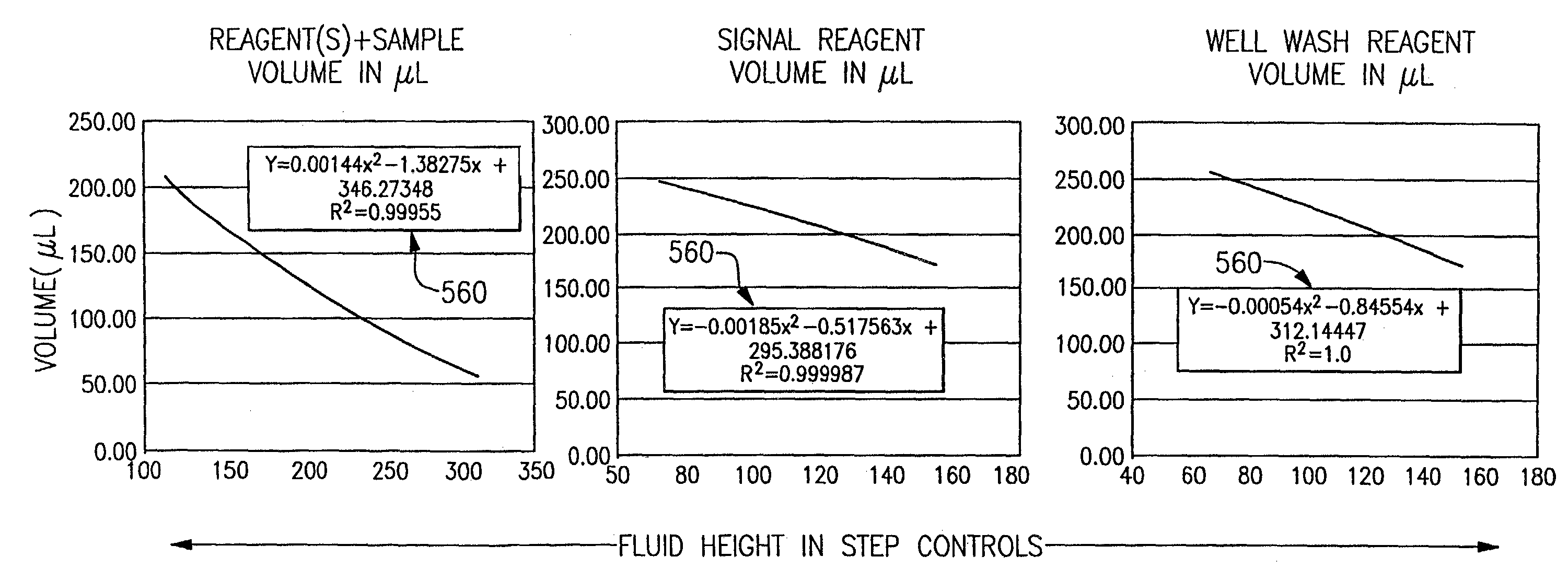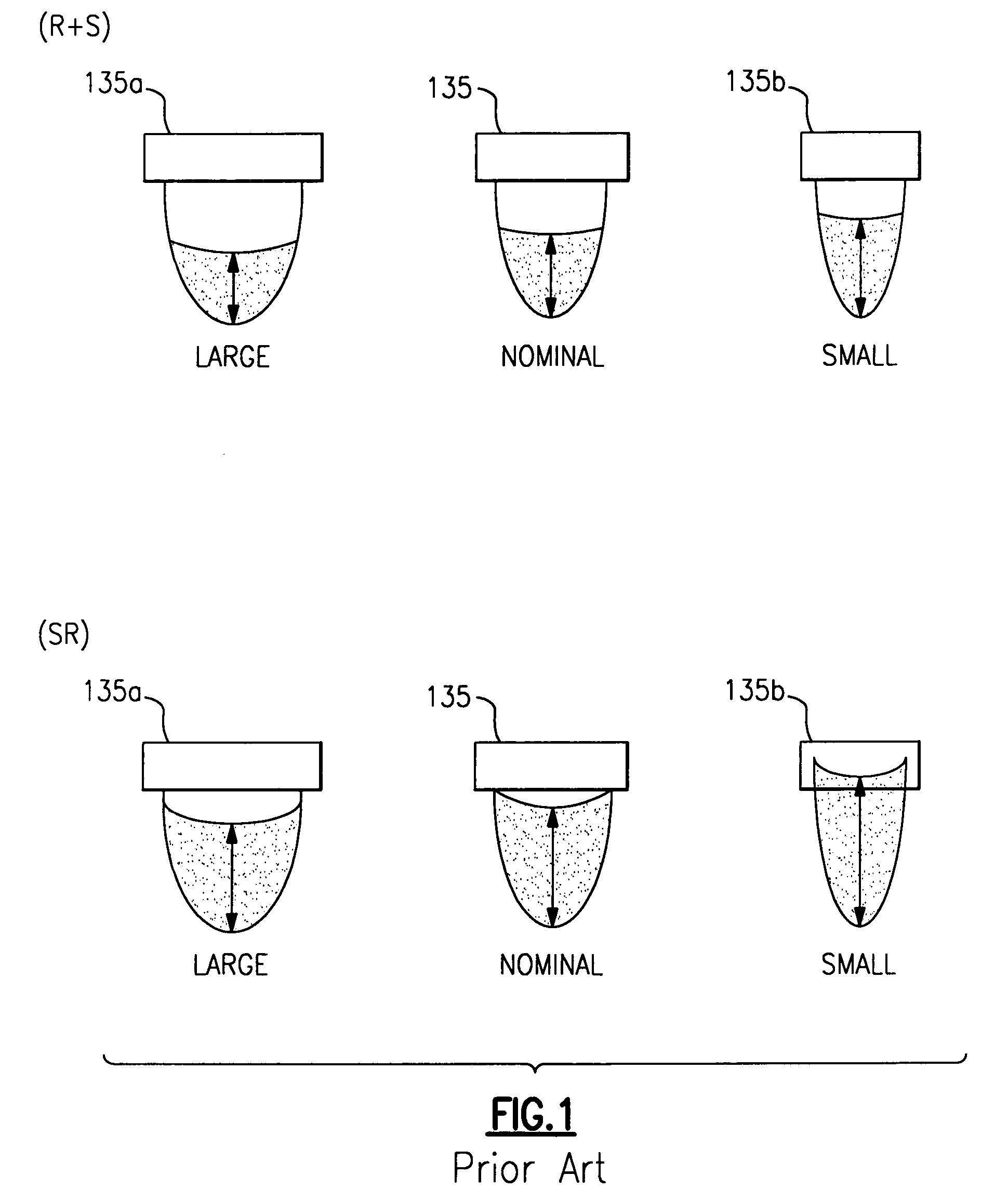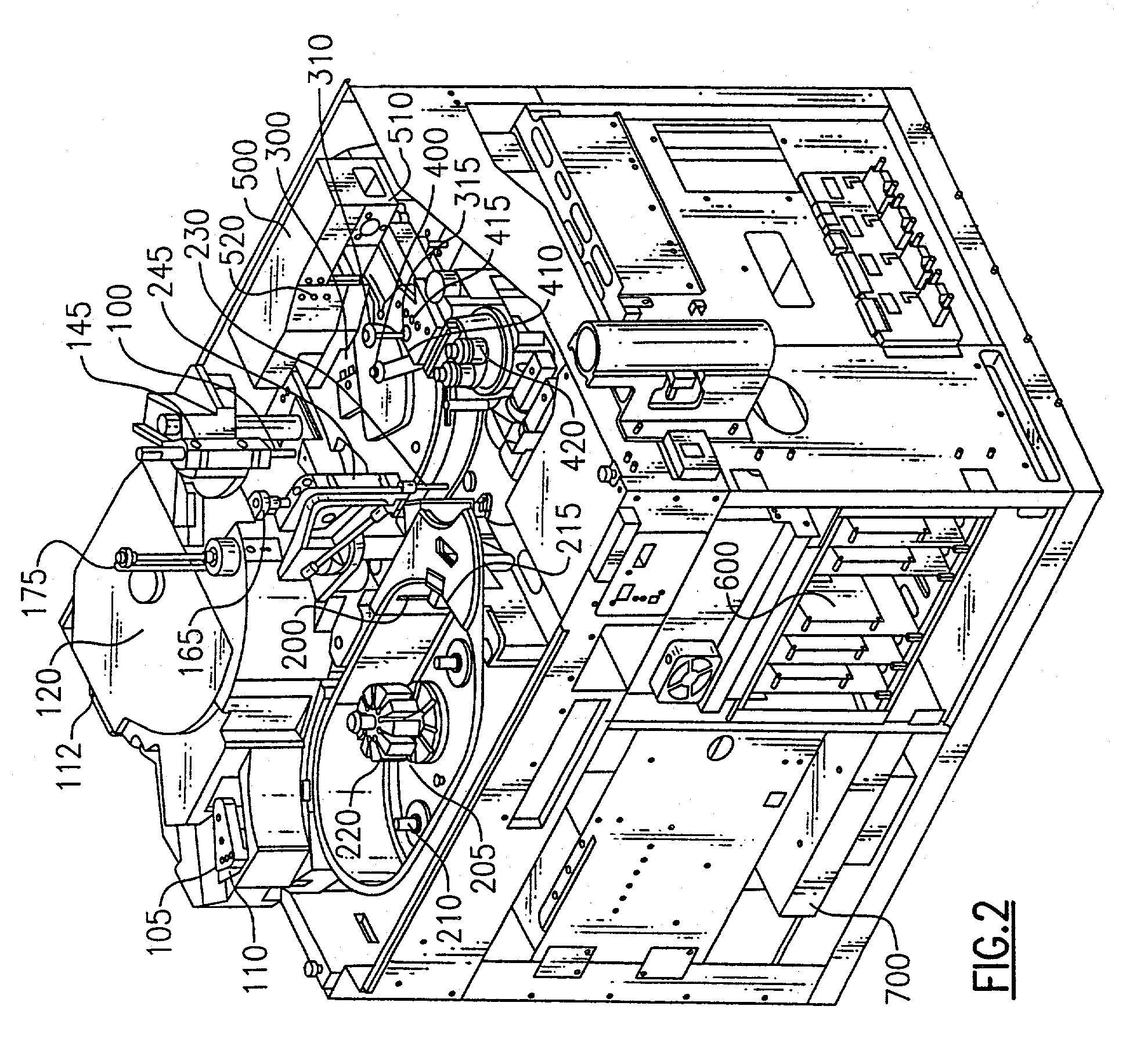Fluid measurements in a reaction vessel used in conjunction with a clinical analyzer
a reaction vessel and fluid measurement technology, applied in the field of analyte measurement, can solve the problems of increasing the potential of degrading throughput and overall system reliability, overall analytical error, and adding significant complexity and cost to the analyzer, so as to eliminate the large/small geometry effect of a reaction well, the effect of effective compensation or normalization
- Summary
- Abstract
- Description
- Claims
- Application Information
AI Technical Summary
Benefits of technology
Problems solved by technology
Method used
Image
Examples
Embodiment Construction
[0040]The following discussion relates specifically to the measurement of fluid volumes in reaction wells that are used in an exemplary clinical blood analyzer, namely, the ECi analyzer manufactured by the Johnson and Johnson Company. It will be readily apparent, however, that the approaches discussed herein are meant to be more generally applicable throughout the industry.
[0041]Referring to FIGS. 2 and 3, the basic operation of the above analyzer is first briefly discussed. The analyzer is designed to conduct automated enzyme immunoassays (EIAs) for analytes including hormones, vitamins, and related compounds, infectious disease markers, cancer markers, therapeutic drug monitoring, abused drug analysis, and other analytes amenable to analysis by EIA. To help further understand the present invention, the operation of the systems is broadly described with respect to the way an assay would be conducted on a sample.
[0042]The analyzer is categorized into systems of components and, where...
PUM
| Property | Measurement | Unit |
|---|---|---|
| volume | aaaaa | aaaaa |
| volume | aaaaa | aaaaa |
| volume | aaaaa | aaaaa |
Abstract
Description
Claims
Application Information
 Login to View More
Login to View More - R&D
- Intellectual Property
- Life Sciences
- Materials
- Tech Scout
- Unparalleled Data Quality
- Higher Quality Content
- 60% Fewer Hallucinations
Browse by: Latest US Patents, China's latest patents, Technical Efficacy Thesaurus, Application Domain, Technology Topic, Popular Technical Reports.
© 2025 PatSnap. All rights reserved.Legal|Privacy policy|Modern Slavery Act Transparency Statement|Sitemap|About US| Contact US: help@patsnap.com



